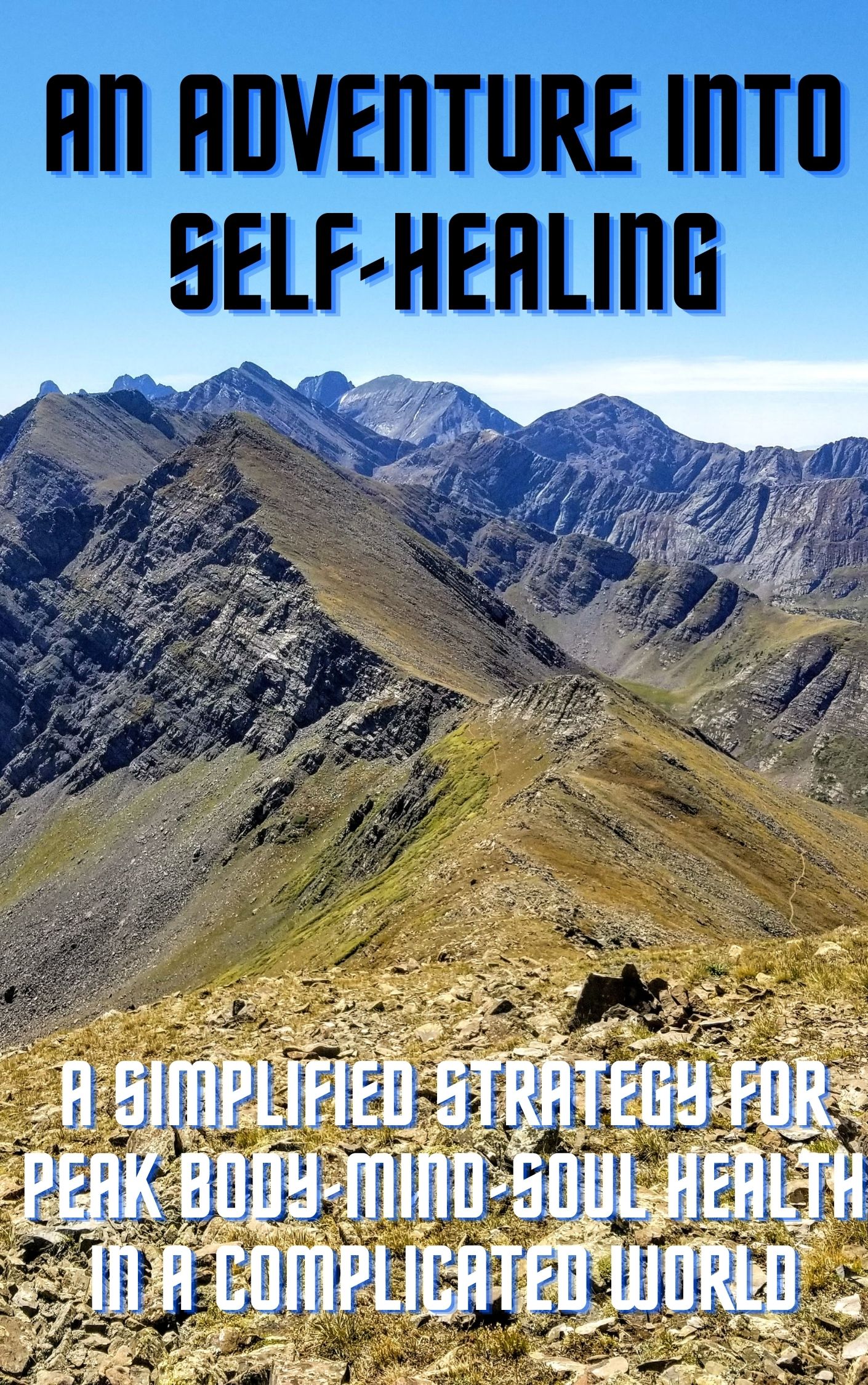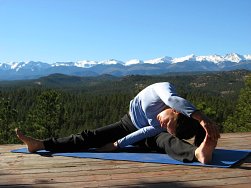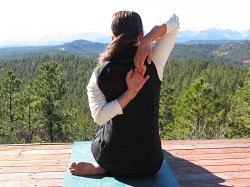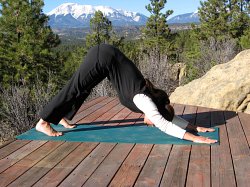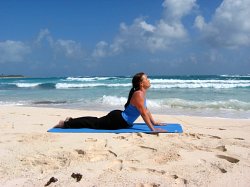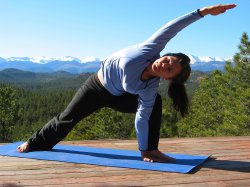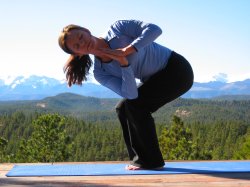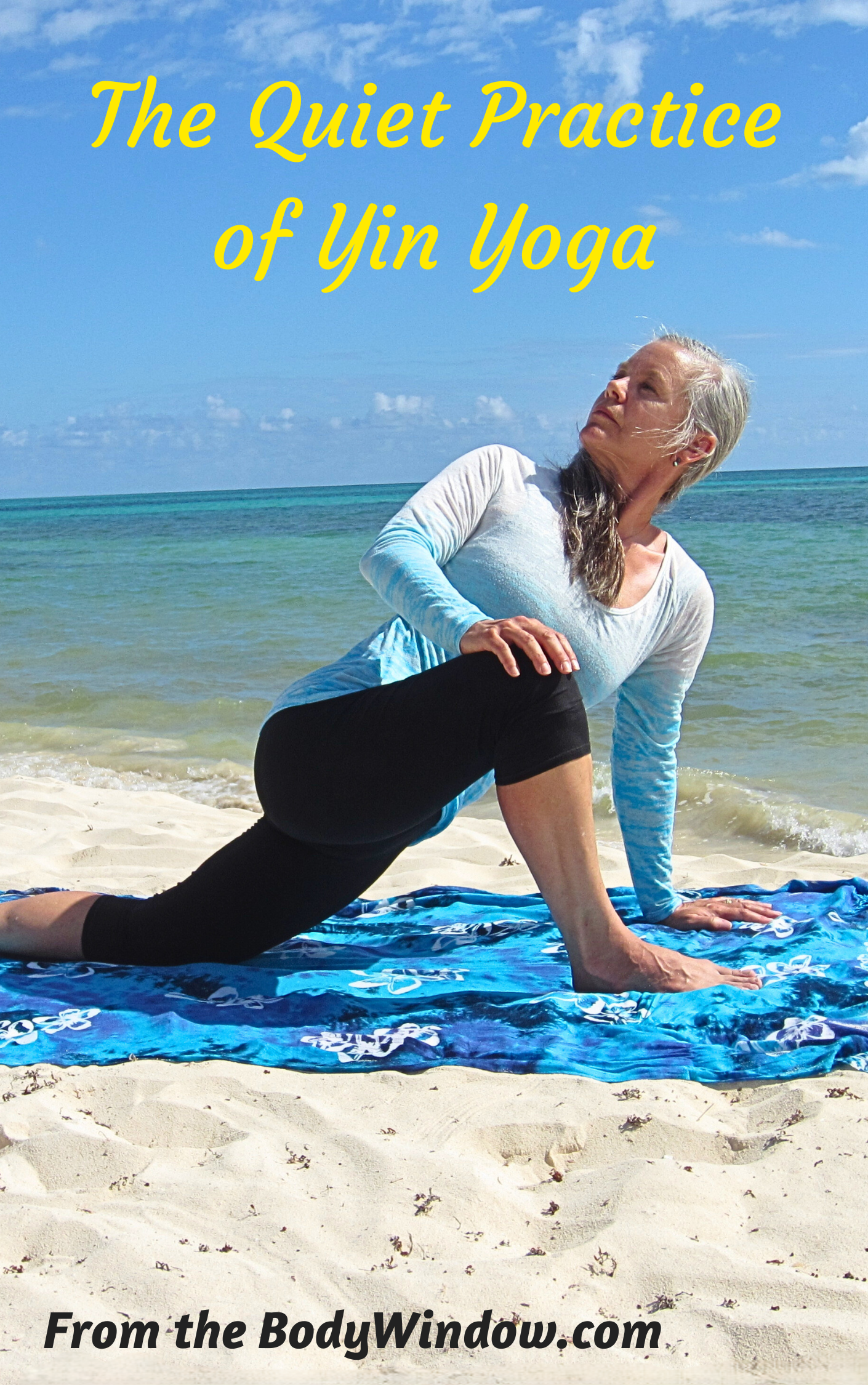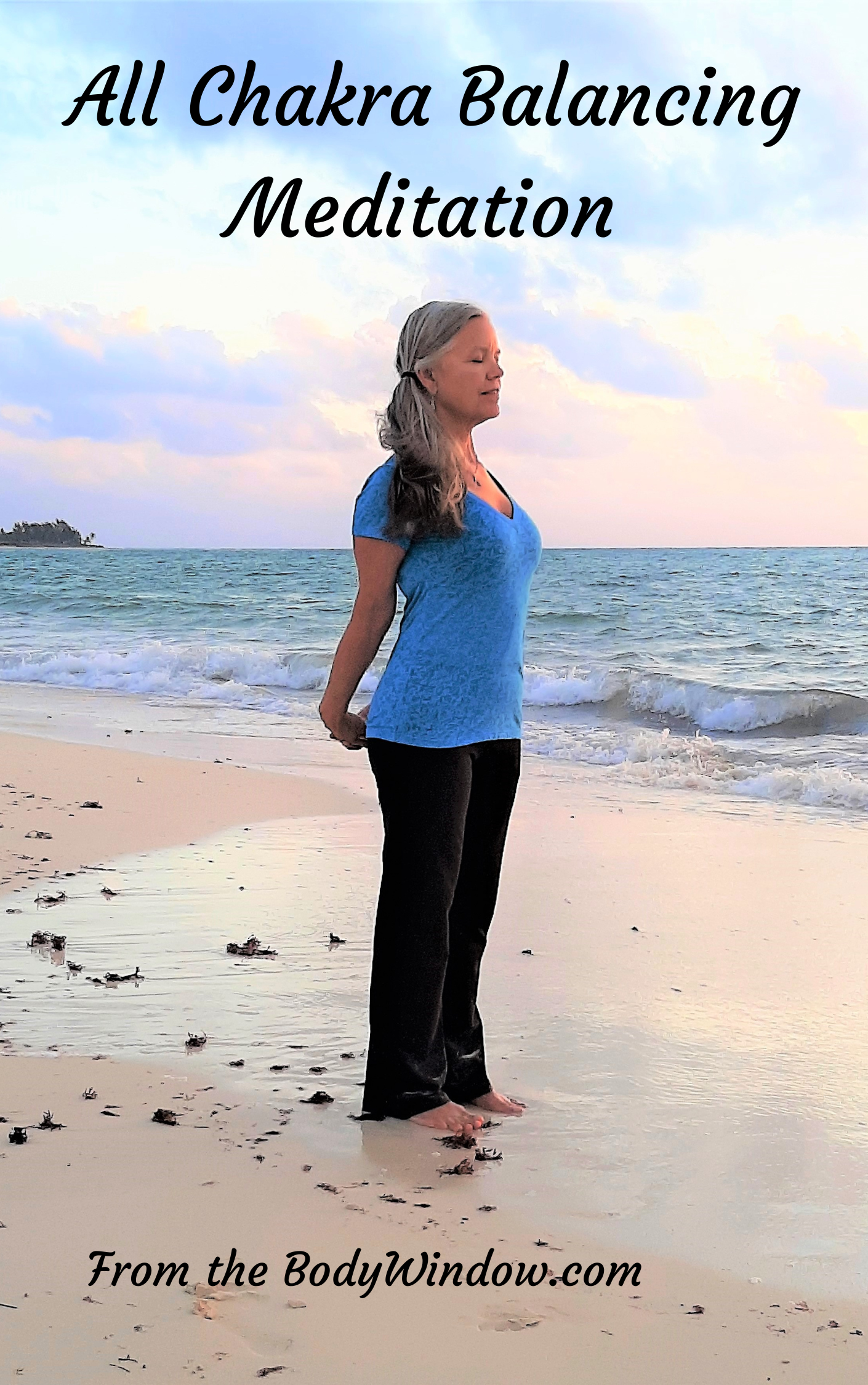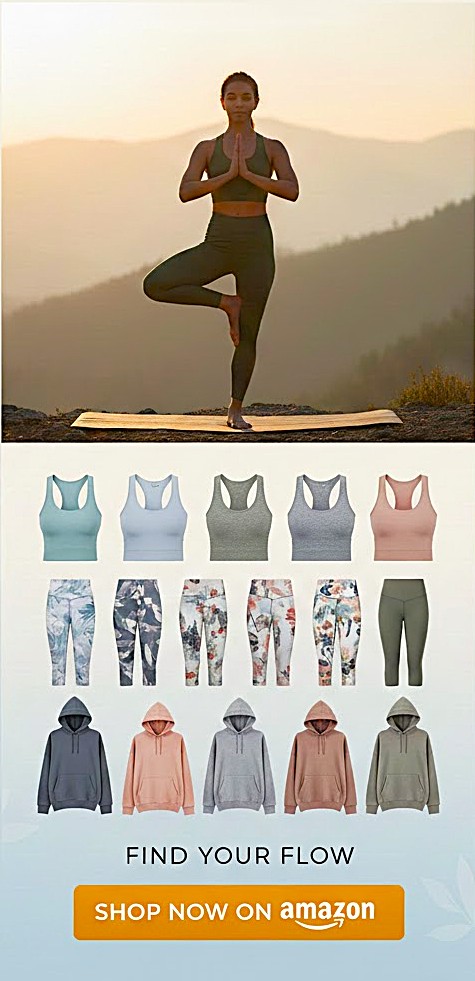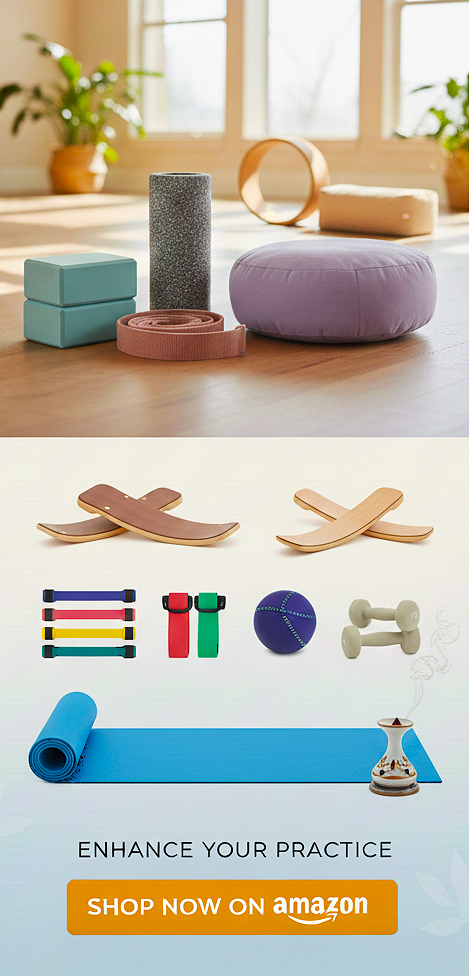Way ~ Through Your Body!
- Home
- Foam Rolling
- Foam Roller Exercises for Your Latissimus Dorsi
Foam Roller Exercises and Stretches for the Latissimus Dorsi (Muscles in the Side and Back)
Perform self-myofascial release with foam roller exercises and latissimus dorsi stretches and heal your body-mind-soul! The latissimus dorsi muscles are metaphors for pulling it all together!
'The human body is the best picture of the human soul.' ~ Ludwig Wittgenstein
The latissimus dorsi muscles involve muscles at the side of the body, under the armpit and around the back. Additionally the teres major is known as the "little helper" of the latissimus dorsi.
I will also show foam roller exercises that include cross friction of the latissimus dorsi, by rolling across the muscle instead of up and down.
I also include back stretches and side stretches (latissimus dorsi stretches) to help you further stretch out tight muscles of your side and mid to upper back where your latissimus dorsi is located.
The Body Window's Self-Guided Healing Course is Now Reduced to only 19.95 USD!
Click here to learn more about how this healing course can change your life!
Since the latissimus dorsi is a component of the movement of the shoulder, and back, it would also be good for you to view Foam Roller Exercises that Focus on Opening Your Shoulder and for the Upper Back.
The shoulder is a very complex system of muscles, tendons, ligaments and bones, with many muscles interconnecting from the arms, back, neck and shoulders. Treating your body as a system instead of just individual muscles, will improve your overall health of your body-mind-soul.
I would also encourage you to read my article, Foam Rolling, for a general discussion of rolling on a foam roller. The therapeutic name for foam rolling is called self-myofascial release.
Self-myofascial release is important to learn if you wish to keep your muscles healthy as you go through life. In my foam rolling article, I more fully explain this physical concept and how the body-mind connection is enhanced by doing it. So pick up your foam roller today and begin healing your body-mind-soul.
All my foam rolling articles are written with this body-mind-soul effect in mind, as you learn to hear your muscular pain, and make the foam roller exercise meditative and intuitive for healing. It is a way for you to learn the 'feel it and heal it' concept. Emotions do affect our bodies and you must understand this concept for body-mind-soul healing.
The Function of the Latissimus Dorsi and Teres Major Muscles
Simply stated, the latissimus dorsi and teres major are both responsible for the adduction, extension, internal rotation and transverse extension of the shoulder. The most familiar movement of the latissimus dorsi is the pull-up.
I call the 'lats' the ‘wings’
because when you view them flexed, at the side and back, they resemble a
bird’s wing.
Reflect on the Meaning of Your Lats in Your Life
I love the use of metaphors. Body metaphors are a result of the collective human experience of the body-mind connection. Metaphors play a huge part in our lives and understanding this in regards to your own body is important in realizing health.
My discussion of the body metaphors that we use surrounding the shoulder can be found at Opening Your Shoulder.
Please see this article to determine if your issues of tight lats
reflect any issues surrounding the shoulder that may refer to a lack of joy and hope in your life.
With the latissimus dorsi muscle, the major movement is in pulling, like that used in rowing and in the pull up. 'Pulling yourself up by the bootstraps' is a metaphor that implies that all you have to do is just be strong enough to pull your own self out of bad situations and problems.
When I went to look up metaphors surrounding the muscular movement of pulling, I was just amazed! I was worried I wouldn’t have enough to write about, in regards to the latissimus dorsi, but was I wrong!
Consider these metaphors: 'Pull yourself together,' 'pull out of it,' 'pull your weight,' 'pull together as a team,' 'pull out all the stops.' All of these sayings are about making the best effort possible, whether it is as a team or in most of these examples, as an individual.
So, instantly what comes to mind, if you have tight and sore latissimus dorsi muscles, is that you are pulling too hard – at precisely what, is what you need to determine.
It is your muscle tightness and soreness in this particular area that tells you that you are pulling too hard – both physically and emotionally. You can focus on this area for your foam roller exercises to help you release this muscle and release the emotions that created the tightness.
Create a list of affirmations that will help you learn to stop pulling so hard. You can decide that pulling your own weight so hard may no longer serve you. You may need to make some changes in your life that bring you more peace and joy. You can learn to develop an attitude of trust, so that others can help pull the weight!
Or if your issue is one of lack of fortitude, you can learn to stop allowing others to 'pull you in all directions!'
Or perhaps something is ‘pulling you in’ that you really need to pay attention to! That would signify the exact opposite of trust! Perhaps you are gullible and trust too much! Or have you been ‘pulled in all directions’ and you need to stand up for yourself. (Another metaphor!)
While practicing the foam roller exercises for your latissimus dorsi, located under the armpit, the side and back, meditate on their meaning in your life.
Affirmations for Trust, Joy, Hope and Fortitude
- I release control to the Divine Will and I am free.
- I trust in the ability of others to help me and guide me in my journey through life.
- I believe in teamwork and trust all the players.
- I trust that all my desires will be fulfilled.
- My life is filled with joy and hope.
- My burdens are light and easy!
- I am free to be me!
- I have my own life and I stand firm.
- I believe in myself and my decisions.
Make Your Foam Roller Exercises for Your Latissimus Dorsi Muscles a Personal Experience
With all the foam roller exercises, it is more therapeutic if you personalize them and take your time on the areas that need it the most. As you roll, stay as long as you like in one position, if your left side is tighter than your right side. Just make sure you do both sides equally to maintain your balance.
Really notice your body and how it feels when you are rolling along the back and side muscles under the armpit. Really notice how you feel with back stretches and side stretches (latissimus dorsi stretch).
Keep your heart open to your own message that your latissimus dorsi brings.
Remember to breathe deeply as you melt farther down into the tight and sore spot. If the pressure of your body becomes too great to cause too much pain that you cannot breathe deeply and evenly, ease up on the back stretch or side stretch, or the pressure on the foam roller.
The deep breathing tells your body all is well and you are relaxed. As long are you continue to deeply breathe, your tight muscle will eventually release and let go.
Feel the pull of the side and back stretches as you sink and roll into the muscles. Breathe even more deeply as you melt farther into this latissimus dorsi stretch. Let go. Feel the tension letting go, as you release your stress and allow the muscle to release as well.
When the muscle finally releases, when you release your gripping, your emotions may also find release. You are releasing your need to pull so hard. You can let go of your need. If you are open and your lats are open and relaxed, you can let trust, hope, joy or fortitude flow in.
Foam Roller Exercises and Stretches for the Latissimus Dorsi and the Teres Muscles:
I will give the foam roller exercises in two parts: Written Instruction and the Meditative Video
- For these foam roller exercises you can use a foam roller of any size, as long as it is round. However, if you are a beginner, a 36 incher, full round is easier to manage.
- In the first foam roller exercise, lay on your side on the floor. Position the foam roller under your armpit, perpendicular to your body.
- Place your feet on the ground, with legs bent for leverage. Keep one arm down and in front of you and the other arm that is on the foam roller, up and out.
- Roll up and down your side, from your armpit on down.
- As you slowly roll up and down, stop on any spot that is sore for 10-20 seconds and allow the pressure to stretch the tissue. Roll to another spot to allow a return of the blood in this area. Go back again the the sore spot and apply the pressure again, for 10-20 seconds. Don't forget to breathe!
- For the second exercise on the foam roller, start in the same position.
- Position your hands behind your head and lean more towards the center of your back.
- Roll up and down, more towards the back to get the posterior portion of the latissimus dorsi.
- This movement will also target other muscles of the back.
- For the third roller exercise again, start with the foam roller under your armpit and your knees bent for leverage.
- This time, keep your arm that is on the foam roller extended, and the other arm behind your head.
- Keep your lower leg extended in a side-lying position and your upper leg bent for balance.
- Roll forward and back in a cross-fiber massaging movement.
- You can place the foam roller farther up or down from your armpit to do the cross fiber roll on the exact area of your latissimus dorsi that needs attention.
You may want to follow up with back stretches and side stretches that target the latissimus dorsi and the teres major, as well as other muscles.
The best thing about Yoga poses is that they utilize many groups of muscles for strength and balance and really provide for functional mobility! See the Benefits of Yoga to learn more about this spiritual, ancient practice.
My favorite for side stretches are the Wide-Angled Seated Side Bend and the Cow Face Pose.
The Downward Dog is also a great side stretch and therefore a latissimus dorsi stretch. Follow it up with the Cobra Pose to complete the inversion sequence.
Also try the Extended Side Angle Pose and Revolved Fierce Pose.
Foam roller exercises and stretches are a wonderful way to create space in your life by creating more space in your body! The stretching metaphor is a powerful one for getting rid of the tension that no longer serves you, by creating the relaxation needed for renewal. With relaxation, new energy for positive changes can be created!
May your path to your inner self be illuminated by these foam roller exercises for your latissimus dorsi and by doing back stretches and side stretches. May the practice of self-myofascial release heal your body-mind-soul!
foam roller exercises for the upper body and upper back:
- Upper Back (Thoracic Spine).
- Shoulder Muscles that Focus on Opening the Shoulder.
- Trapezius Muscles.
- Pectoral Muscles that focus on Opening your Chest.
- Upper Arms ~ Biceps and Triceps.
- Forearms ~ Brachioradialis, Wrist Flexors and Extensors.
- Myofascial Release ~ The Self-Emptying of Body-Mind-Soul Kenosis
- Using Your Roller for Developing Intuition.
Can't find what you're looking for? Search this website:
Support This Website and Its Mission
Thank you so much for considering a donation to help support this website. I appreciate your thank-you for access to so much free information. If you feel you have been blessed by this website, thank-you for your donation! (Please note that you will be directed to PilgrimageTraveler.com's Paypal page when you click the donate button. This is another website of mine, a subsidiary and I have consolidated two accounts!)
© Copyright 2009-, by Elle Bieling, BodyWindow.com
All Rights Reserved
We also hereby confirm, as stated in our Privacy Policy, that we do not sell personal information of any kind.
Information on this website is not intended for medical advice. See your health care provider for any health concerns. By using this website and/or practicing any yoga postures, foam rolling exercises or other physical movements contained herein, you are agreeing that you are in good health, cleared by your healthcare professional to participate in physical activities and you release The Body Window from any liability involved in the practice.
